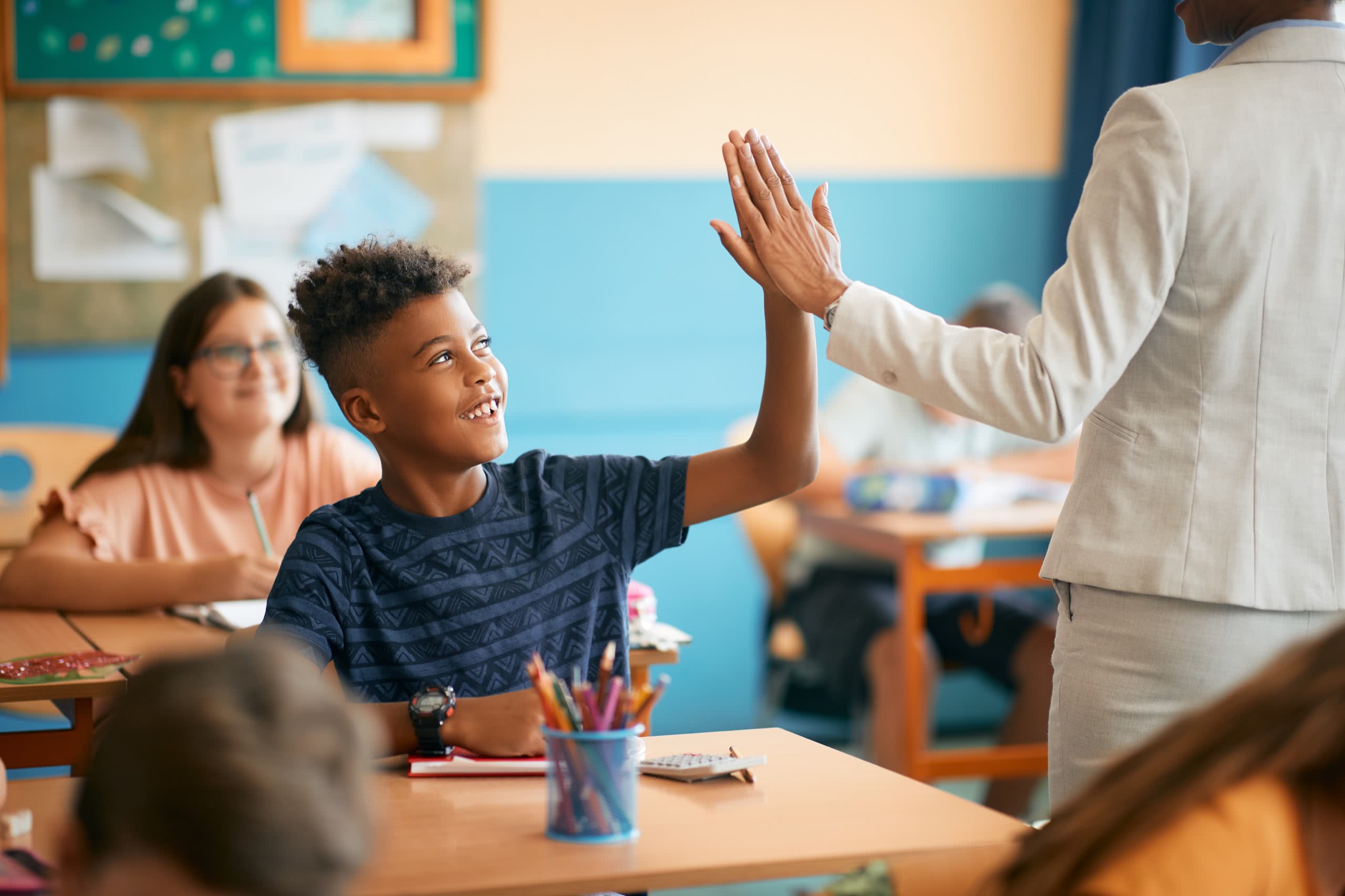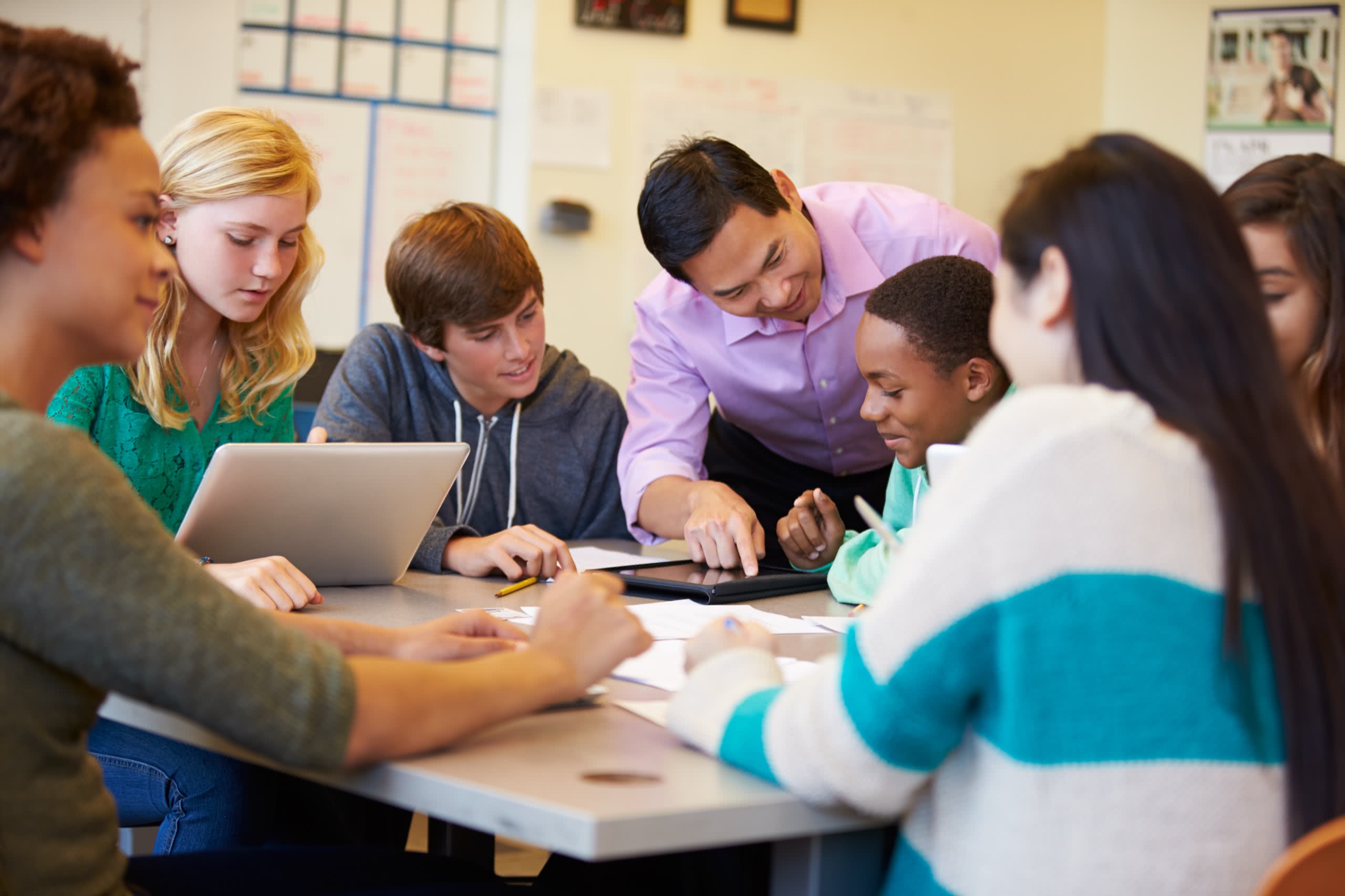Calm classrooms, vibrant school communities.
Calm Classroom is one of the largest providers of school-wide mindfulness programs and training. Since 2007, we’ve empowered over 140,000 teachers and 4 million students with tools to be present and care for their mental and emotional health.
Get Started
Starter/Sustainability Package
Our Starter & Sustainability Packages include everything you need to implement or sustain the Calm Classroom program schoolwide. This all-in-one offering includes digital access, training for new and returning staff, implementation resources, and survey reporting help you measure success:
- 1-Year Teacher Portal Access for ALL staff
- 2-hour E-Learning Course for new staff
- 45-min Refresher E-Learning Course for returning staff
- Professional Development Toolkit
- Program Surveys & Data Reports
- **Optional add-ons: printed materials & live training**
$1,200/school
Live Training & Support
Cultivate a school-wide culture of mindfulness with teacher-centered professional development for your staff:
- Coaching & Implementation Support: Calm Classroom Coaches provide focused support sessions to assist with initial program rollout and prepare for a successful school year implementation. ($250/session)
- Direct-to-Staff: Calm Classroom Coaches provide direct training to school staff through four live, interactive virtual workshops, delivered over the course of the school year. ($3000)
Learn more - Train-the-Trainer: Calm Classroom Coaches train two staff members from each school to become Calm Classroom Facilitators, who are then responsible for leading the four live workshops to teachers at their respective schools. ($3000)
Learn more
Printed Books & Materials
From classroom manuals, to chimes and more, Calm Classroom provides the tools to teach and engage your students in the Calm Classroom program:
- Hardcopy Manuals ($25-$30): Choose from Elementary, Pre-K & Kindergarten, or Middle & High School
- Focusing Chimes ($14)
- Student Ambassador Posters ($9)
- “Any Time, Any Place” Classroom Poster Set ($20)
- “We Are a Calm Classroom School” (3’x4’) Vinyl Poster ($50)
- Calm Classroom Mindfulness Kit ($110)

Not yet ready to buy? Visit our Try It Free page for access to sample mindfulness content!
Are you a teacher? Learn more about our options for educators.
Impactful & Engaging
Staff-wide professional development supports program engagement, building the foundation for improved community wellbeing
Research-based
A growing body of scholarly research, thousands of teacher surveys, and over a decade of working with one of the nation’s largest public school systems have informed our programs.
Flexible & Inclusive
Program integration is customizable and scalable to suit the specific needs of your school or district.

Benefits for Students
Students who use mindfulness techniques have better mental health, cognitive outcomes, and social-emotional skills. These benefits may help them throughout their lives.

Benefits for Educators
Mindfulness helps teachers improve their mental health and become more effective at their jobs. Randomized controlled trials have found that teachers who try mindfulness enjoy:
A small investment with big returns
92%
of teachers say their students are calmer after engaging with Calm Classroom routine
89%
of teachers say their students are more engaged and learning‑ready
78%
of teachers experience a reduction in their own stress and anxiety
2023-2024 survey of 2,259 teachers who implemented Calm Classroom
Let us design a solution for your educators and students.
Program and training can be scaled to meet the needs of communities and budgets of all sizes.
Contact us today to begin partnering on a solution for you.
Peek inside a Calm Classroom
Teachers and students share how they use Calm Classroom and the benefits they’ve experienced.
Frequently asked questions
Why do we need mindfulness programs in our schools?
Mindfulness is our ability to pay attention to what’s happening in the present moment with an attitude of openness and curiosity. Research has shown that practicing mindfulness can help students and educators learn how to build self-awareness, regulate their emotions, and focus their attention – skills that are key to success in and outside of the classroom!
In addition to building these important skills, incorporating mindfulness into the classroom has been shown to create a calmer classroom environment by supporting students in feeling safe and at ease throughout the school day. Teachers also benefit from the practice, which can help reduce feelings of burnout and chronic stress while contributing to a more positive school climate overall.
The mindfulness techniques found in the Calm Classroom program can support students in healing from the effects of childhood trauma. By learning skills that activate the body’s relaxation response, while calming the fight-or-flight mechanisms in the limbic system, students can harness their innate resilience and become active participants in their own wellness. Educators who may be experiencing vicarious trauma, chronic stress and/or burnout report the personal benefits of teaching and practicing Calm Classroom techniques on a regular basis.
How does the program work? Is it daily?
The Calm Classroom manual is composed of 3-minute scripted mindfulness-based techniques that are led 2-3x per day during classroom transitions. While classroom teachers are encouraged to lead the techniques daily during a set schedule, school counselors, social workers, deans, paraprofessionals and other school staff are invited to lead the techniques during authentic moments, such as during one-on-one or small group meetings, after a classroom upset or before a test or quiz.
How many activities are there and how does the daily schedule roll out?
The manuals are composed of 40+ breathing, movement, relaxation and focusing techniques. Each hardcopy and digital manual includes an Implementation Schedule that provides guidelines for rolling out the techniques in the classroom. Teachers are encouraged to lead the same 2-3 techniques every day for one week, before moving on to the next week of techniques laid out in the schedule.
Should students or teachers lead the activities from the scripts or play the audio recordings?
Teachers are encouraged to read the techniques aloud from the scripts in order to maximize student engagement and create a sense of connection and care. Teachers may also choose to train students to lead the techniques aloud 1-2x per week. If teachers are not comfortable reading the techniques aloud or would like to practice along with the students, audio recordings of each technique are accessible via the digital manuals in the Calm Classroom Teacher Portal.
What is included in the Calm Classroom Teacher Portal?
The Calm Classroom Teacher Portal is our online platform that includes access to digital versions of all of our hardcopy manuals, our 2-hour Calm Classroom E-learning Course, and a library of nature videos and audio to play during Calm Classroom or at other times throughout the day. The digital manuals include audio recordings of each technique as well as Connection Questions for teachers to use in the classroom 1-2x per week post-technique to encourage self-awareness, discussion and social-emotional skill building.
What are the benefits to implementing Calm Classroom school-wide?
When implemented on a school-wide level, Calm Classroom contributes to a school-wide culture that centers foundational social-emotional skills like self-awareness and self-management, setting the stage for the healthy development of other core competencies like social awareness, relationship skills, and responsible decision-making. The program encourages students and staff to develop a common language around emotional regulation and well-being, leading to a school environment that fosters a sense of safety and belonging. Mindfulness interventions have been shown to improve executive functioning especially when practiced starting at a young age, and by beginning Calm Classroom in pre-k and kindergarten classrooms and continuing through middle school and high school, students will retain skills that will support them in the classroom and beyond.